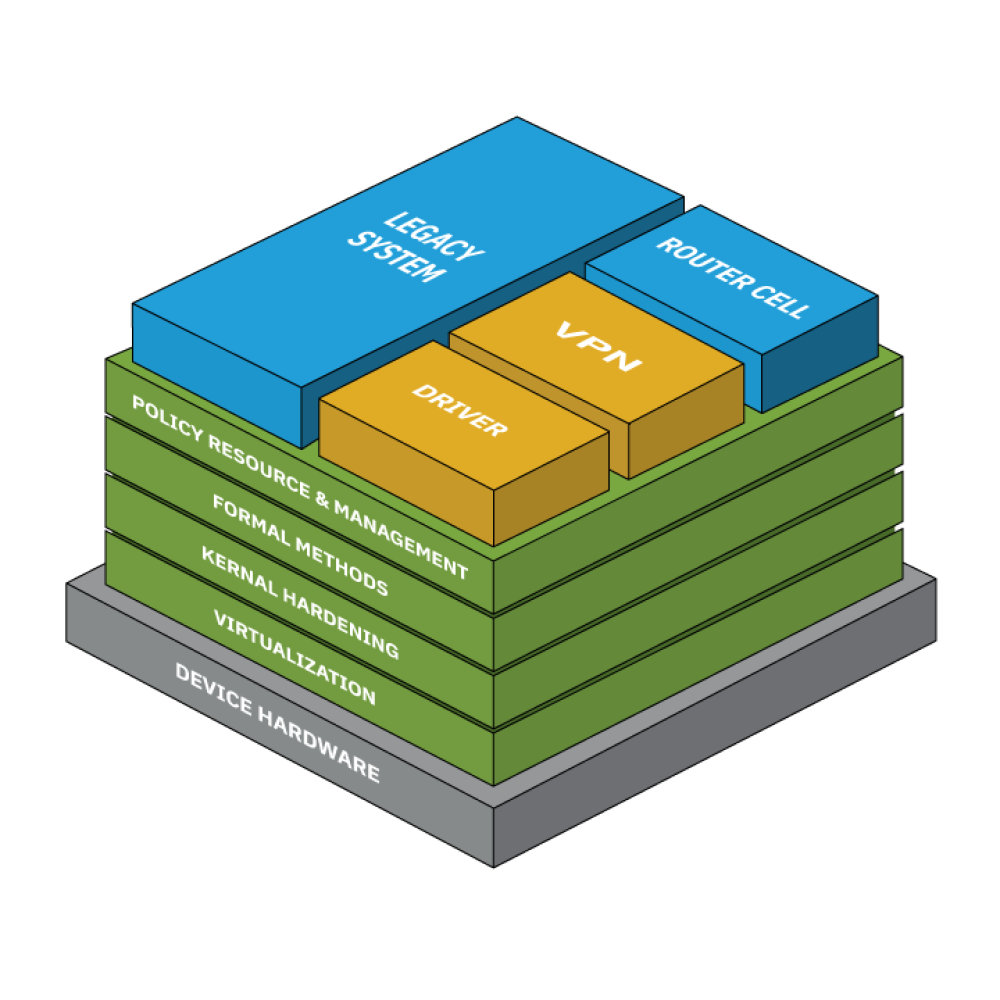Don’t Let Your Systems Sink: How to Lean into Modular, Solutions to Improve Your Cybersecurity
Author(s): Tara Clapper, Carl Nerup
On April 14, 1912, the RMS Titanic famously sank following a collision with an iceberg in the North Atlantic Ocean. With historical hindsight, we know that multiple design changes and actions might have saved more lives or prevented the ocean liner from sinking altogether, including improving the design of the bulkheads in the ship.

The bulkheads in the interior of the ship didn’t reach all the way to the ceiling, allowing water to remain uncontained and spill over each bulkhead into the next compartment. Those striving to future-proof cybersecurity measures can learn from the Titanic’s most infamous design flaw.
In the hardware and software security solutions produced by Riverside Research and its recent acquisition, Cog Systems, the bulkhead equivalents reach all the way to the top of the “ship,” ensuring each security measure fully contains the exploit that is trying to spill over into the adjacent bulkhead. If one compartment becomes unusable for any reason, it’s already sealed off and contained – as the bulkheads of the Titanic were meant to do.

While seafaring vessels of the past such as the Titanic missed the mark in modularity, more modern structures are designed with this methodology in mind, including the International Space Station, which has been in orbit since 1998.
“With a fully modular system, you can embrace your inner Adm. Farragut and bark out to your crew: ‘Damn the torpedoes! Full Speed Ahead’ – with the associated confidence that you have built a highly resilient system,” said Carl Nerup, Vice President of Business Development at Riverside Research and former CEO of Cog Systems. “Modularity as the foundation of your security approach is critical to any defense in depth solution.”

In the White Star Line’s hubris, they marketed the Titanic as “unsinkable” because the luxury liner was unlike any ship that had sailed before. This idea of newness also fascinated news reporters, and the public bought into the idea that something so large and impressive was without flaws.
As in ship design, we cannot make the mistake of thinking our modular approach is “absolutely” secure. It is a foundation that allows for rapid response, remediation, and repair. The modular approach enables one to keep pace as technology also becomes quickly outmoded, enabling the ability to identify modules that are compromised, damaged, or simply require an upgrade due to design or technological changes – this is where the foresight of modular design makes for a better system.
If you’re ready to implement reliable technology at the speed of relevancy, Riverside Research, with the integrated Cog Systems solutions, is ready to assist. Contact us for more information.
Featured Riverside Research Author(s)
Tara Clapper
Tara Clapper is a marketing strategist and content creator at Riverside Research. Her professional background includes technical writing, social media management, publishing, marketing, editorial duties, analog game design, prompt engineering, and content management in govcon, academic, and private sector spaces. Tara helps tell the Riverside Research story by interviewing SMEs for blogs, press releases, and social media channels. Tara holds a Bachelor of the Arts in English from McDaniel College.
LinkedIN
Carl Nerup
Carl Nerup is the VP of Corporate Development at Riverside Research, including strategic initiatives, partnerships, and alliances. A communications industry veteran, he brings a wealth of knowledge to the leadership team with demonstrated successes in cyber security, embedded systems, mobile/wireless, and new product development.
Prior to Riverside Research’s acquisition of Cog Systems, Carl served as its founder and CEO. He previously worked as the Global Vice President for Samsung where he had responsibility for the secure mobility business. His background also includes strategic development support at General Dynamics and Vice President, Strategic Business Development and Venture & Equity Portfolio Management, at AT&T.
Carl attended the United States Naval Academy and holds a Bachelor of Science from Seattle University. He also received a degree in Data Communication from the University of Washington.
LinkedIN
The above listed authors are current or former employees of Riverside Research. Authors affiliated with other institutions are listed on the full paper. It is the responsibility of the author to list material disclosures in each paper, where applicable – they are not listed here. This academic papers directory is published in accordance with federal guidance to make public and available academic research funded by the federal government.
